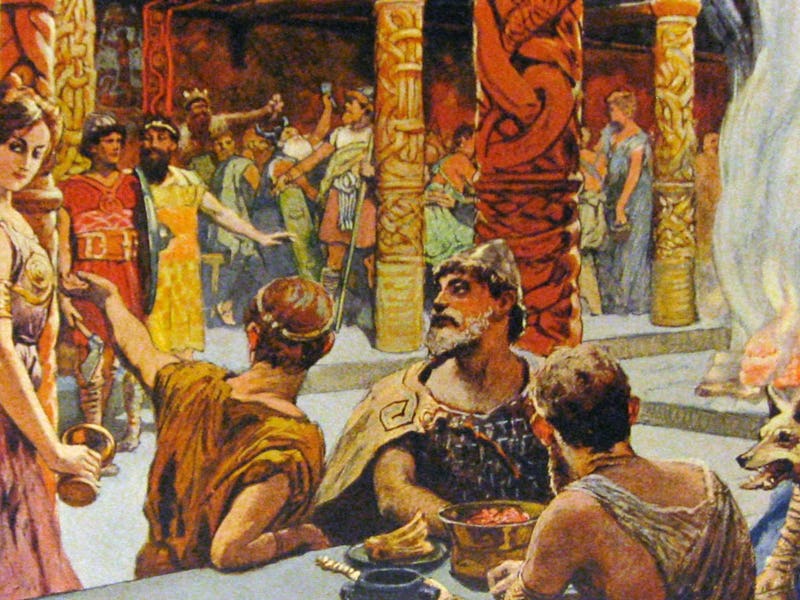How Valhalla in Thor: Love and Thunder compares to Marvel Comics and Norse myth
Valhalla makes the leap from Marvel comics to the MCU.

Thor: Love and Thunder is filled with surprises, from unexpected cameos to shocking deaths, and one particular twist in the movie’s post-credits sequence sees some familiar heroes guided to the afterlife of Valhalla. It’s the first time we’ve seen Valhalla in the MCU, but the lofty plane already has a history in Marvel comics, not to mention its ancient history in the Norse religion. Here’s what you need to know.
Valhalla in Thor: Love and Thunder
We first see Valhalla in the MCU along with Jane Foster.
In Thor: Love and Thunder, we’re told that Valhalla is an afterlife reserved for Asgardians who fall in battle. It’s a paradise, and being sent there is a mark of honor. We see just how true that is when Lady Sif is wounded in battle with Gorr and decides to just accept death so she can see Valhalla, only for Thor to point out that the fight is already over.
Valhalla makes its appearance in the post-credits scene, when Jane Foster is greeted by Heimdall at the realm’s door. Jane is from Earth, not Asgard, but she did sustain mortal wounds fighting Gorr after being chosen as worthy by Mjolnir, which is apparently enough to make her an honorary Asgardian. When she dies, she disappears in a gold puff just like Odin before her, signaling her acceptance as an Asgardian.
Valhalla in Marvel comics
Mighty Thor is no stranger to Valhalla in Marvel comics.
Valhalla’s comic book history lines up pretty well with its appearance in Thor: Love and Thunder. One of the biggest comic storylines involving Valhalla even centers on Jane Foster’s role there: she dies of cancer after taking up Mjolnir and is granted entrance to Valhalla.
If future movies follow comic canon, we may not have seen the last of Jane. She hesitates before entering Valhalla in the comics, giving Thor time to resurrect her. Back on Earth, she lets Thor handle all the Mjolnir-ing so she can focus on her health. That lasts only until the War of the Realms crossover, where she takes up an alternate universe version of Mjolnir to join the fight. She later becomes the last Valkyrie, guiding warriors who die in battle to Valhalla.
Valhalla in Norse mythology
Valhalla is just one of several afterlife realms in Norse mythology.
Marvel comics show Valhalla as a feasting hall full of fallen warriors, and at least one storyline features them rallying to face down Ragnarök. Of the two Marvel depictions the comic version gets closest to Valhalla’s ancient roots, but the original is a lot more complicated.
The basics are mostly the same. Valhalla is an afterlife accessible only to fallen warriors, who are led there by Valkyries. It’s depicted as a great hall, and it serves as a waiting room for Ragnarök rather than an eternal paradise.
That’s not to say Valhalla isn’t a pleasant place. In the lavishly adorned halls that Odin rules, fallen warriors are free from worry. They spend every day fighting each other for sport, while every night their wounds are healed and they’re treated to a feast made from the flesh of Saehrimnir, a giant boar who’s slain each day and resurrected the next morning. They also get their fill of mead, which flows from the udders of the goat Heidrun.
Valhalla is not the only afterlife in Norse mythology. In addition to Hel, a dreary realm for those who die of sickness and old age, there’s yet another world for fallen heroes. Just as Valhalla is Odin’s turf, the goddess Freya oversees Fólkvangr, which is rarely mentioned in Norse sources.
Only some slain warriors go to Valhalla, while about half wait for Ragnarök in Fólkvangr. There’s no hint in actual Norse sources of how the two divvy up the souls, and some stories tell of people who didn’t die in battle being granted entrance. Likewise, Fólkvangr doesn’t get much of a description aside from it being a great feasting hall. That’s likely why Valhalla is the far better known of the two seemingly parallel afterlives, and why Marvel isn’t likely to muddy the waters by introducing it.
This article was originally published on